InterviewSolution
This section includes InterviewSolutions, each offering curated multiple-choice questions to sharpen your knowledge and support exam preparation. Choose a topic below to get started.
| 10951. |
A tetrahedron is three dimensional figure bounded by four non coplanar triangular plane. So a tetrahedron has points A,B,C,D as its vertices, which have coordinates (x_(1),y_(1),z_(1)) (x_(2), y_(2), z_(2)) , (x _(3), y_(3) , z_(3)) and (x _(4), y _(4), z _(4)) respectively in a rectangular three –dimensional space. Then the coordinates of its centroid are ((x_(1)+ x_(2) + x _(3) + x_(4))/(4) , (y _(1) + y _(2) + y_(3) + y _(4))/(4), (z_(1) + z_(2) + z_(3)+ z_(4))/(4)). The circumcentre of the tetrahedron is the centre of a sphere passing through its vertices. So, the circumcentre is a point equidistant from each of the vertices of tetrahedron. Let tetrahedron has three of its vertices represented by the points (0,0,0) ,(6,-5,-1) and (-4,1,3) and its centroid lies at the point (1,-2,5). Now answer the following questions The distance between the planes x + 2y- 3z -4 =0 and 2x + 4y - 6z=1 along the line x/1= (y)/(-3) = z/2 is : |
|
Answer» `19/22` |
|
| 10952. |
A line segment of length 8cm is divided into two parts AP and PB by a point P. If AP^2+PB^2 is minimum then AP= |
|
Answer» P is the midpoint of AB |
|
| 10953. |
Evalute the following integrals int (x^(3m) + x^(2m) + x^(m)) (2x^(2m) + 3x^(m) + 6)^((1)/(m))dx ( x gt 0) (m in^(x) N) |
|
Answer» |
|
| 10955. |
Evaluate int _(0)^(pi//2)ln((1+a sin x)/(1- a sin x)) (dx)/(sinx) (|a|lt1) |
|
Answer» |
|
| 10956. |
Consider three distinct real numbers a,b,c in a G.P with a^2+b^2+c^2=t^2 and a+b+c =alpha t .The sum of the common ratio and its reciprocal is denoted by S. Complete set of alpha^2 is |
|
Answer» `(1/3,3)` `(a^(2)+a^(2)R^(2)+a^(2)r^(4))/((a+ar+ar^(2))^(2))=t^(2)/(alpha^(2)t^(2))=1/alpha^(2)` `alpha^(2)=(r^(2)+r+1)/(r^(2)-r+1)` LET `alpha^(2)=y`, `thereforey=(r^(2)+r+1)/(r^(2)-r+1)` `(y-1)r^(2)-r(y+1)+(y-1)=0` For REAL r, `(y+1)^(2)-4(y-1)^(2)ge0` `rArr1/3leyle3` But `ne1//3,1,3``(becauserne1,-1,0)` `therefore1/3ltylt3andyne1` `alpha^(2)in(1/3,3)-{1}` |
|
| 10957. |
Consider three distinct real numbers a,b,c in a G.P with a^2+b^2+c^2=t^2 and a+b+c =alpha t .The sum of the common ratio and its reciprocal is denoted by S. Complete set of alpha^2 is |
|
Answer» `(-2,2)` `SIN(-oo,-2)cup(2,oo)` |
|
| 10958. |
Show that the least cloth is required to construct a conical tent of given volume if the ratio of height to the base radius is sqrt2 : 1. |
| Answer» | |
| 10959. |
If the foot of perpendicular drawn from the point (a,b,c) and the line x = y = z then ..... |
| Answer» Answer :C | |
| 10960. |
Which of the following operations is not possible ? |
|
Answer» `(vecA.VECB)VECC` |
|
| 10961. |
If P = (0,1,0), Q = (0,2,1) , then the projection of PQ on the planex+y + z = 3 is |
| Answer» ANSWER :B | |
| 10962. |
1+(1+2)/(2!) +(1+2 +2^2)/(3!) + .......oo = |
|
Answer» `E(e-1)` |
|
| 10963. |
If 2P(A) = P(B) =5/13 and P(A/B) = 2/5 find P(AcupB) |
|
Answer» |
|
| 10964. |
Draw the graph of y=(1-x^(2))/(1+x^(2)) and hence draw the graph of y=cos^(-1).(1-x^(2))/(1+x^(2)). |
|
Answer» Solution :We have `y=f(x)=(1-x^(2))/(1+x^(2))=(2)/(1+x^(2))-1` Clearly, the domain is R. `y=f(x)` is an even funtion, so the graph is SYMMETRICAL about the y-axis. Let us first draw the graph of r`x in [0,oo)`. `f(0)=1` `f(x)=0 :. x=1` `underset(xrarroo)lim((2)/(1+x^(2))-1)=-1` THUS, from `f(0)=1,((2)/(1+x^(2))-1)` decreases intersecting the x-axis at (1,0) and APPROACHES '-1' as x approaches `'oo'`. Also `f'(x)=(-4X)/((1+x^(2))^(2))`, so f(x) is differentiable at x = 0. Hence the graph of `y=f(x)` is as shown in the FOLLOWING figure.  Since the range of `(1-x^(2))/(1+x^(2))` is (-1,1), the domain of `g(x)=cos^(-1)f(x)=cos^(-1).(1-x^(2))/(1+x^(2))` is also R `g(0)=cos^(-1)(1)=0` and `underset(xrarroo)limcos^(-1)((1-x^(2))/(1+x^(2)))=underset(xrarroo)lim cos^(-1)((2)/(1+x^(2))-1)=pi` Thus, the value of g(x) increases from '0' and approaches `'pi'` as x approaches `'oo'`. Also g(x) is an enven function, so the graph is symmetrical about the y-axis. Also `g'(x)=(f'(x))/(sqrt(1-(f(x))^(2)))` g'(0) does not exist as f(0)=1, so g(x) is non-differentiable at x=0. Hence the graph of `y=g(x)` can be drawn as shown in the following figure. 
|
|
| 10967. |
A book containing 100 pages is opened at random. The probability that on that page a doublet is found is |
|
Answer» `(1)/(10)` |
|
| 10969. |
The probability that a bulb produced by a factory will fuse after 150 days of use is 0. 05. find the probability that out of 5 such bulbs.i. none ii. not more than oneiii. more than one iv. atleast one will fuse after 150 days of use. |
|
Answer» |
|
| 10970. |
Two circles S and S' intersect at P and Q. A, C lie on S and B , D lie n S' such that APB is parallel to CQD . Then |
|
Answer» ABCD is CYCLIC quadriateral |
|
| 10972. |
If then sum of two positive numbers in constant then show that their product is maximum when they are equal. |
|
Answer» SOLUTION :Let X and y be two positive numbers such that x + y = C (constant) then y = c - x Let `p = xy = x(c- x) = cx - x^2` `dp/dx = c - 2x, (d^2p)/dx^2 = - 2 lt 0` `therefore` p is maximum when `c - 2x = 0 I.e, x = c/2` if `x= c/2` then `y=c/2`. `therefore` The two numbers are equal. (Proved) |
|
| 10973. |
From a piont P (0,b) two tangents are drawn to the circle x^2+y^2=16 and these two tangents intersect X-axix is two points A and B. If the are of DeltaPAB is minimum , then the equation of its circumcircle is |
|
Answer» `x^2+y^2=6 sqrt(2)` |
|
| 10974. |
If (1+x+x^(2))^(8)=a_(0)+a_(1)x+a_(2)x^(2)+.........+a_(16)x^(18)AAx " then "a_(5), us equal to………. |
|
Answer» 502 |
|
| 10975. |
If the chord y=mx+1 of the circle x^(2)+y^(2)=1 subtends an angle of measure 45^(@) at the major segment of the circle then m= |
| Answer» ANSWER :B | |
| 10976. |
Consider following data 35,32,36,34,41,45,28,50,49 I . Find the median (ii)Find the mean deviation from the median. |
|
Answer» |
|
| 10977. |
Let A = [(1,tanx),(-tanx, 1)] & B = A^(T) A^(-2) if f(x) = det (adj B) then number of solution(s) of the equation 10f(x) – x = 0 is (are) [Note: det(P) denotes the determinant of a square matrix P] |
|
Answer» ` = |A^(T)||A^(-2)| = |A| 1/(|A|^2)` `=1/(|A|) = 1/("sec"^2 x) = cos^(2) x`  `10 cos^(2) x - x = 0` |
|
| 10978. |
Integrate the following int_0^1x^7/sqrt(1-x^2)dx |
|
Answer» Solution :`int_0^1x^7/sqrt(1-x^2)DX` =`int_0^(pi/2)(sin^7theta.costhetad theta)/costheta (where `x=sintheta` `rArr dx=costhetad theta`) =`int_0^(pi/2)sin^7thetad theta=6/7 . 4/5 . 2/3=(48)/105` |
|
| 10979. |
Show that (i) (3+isqrt(5))^(12)+(3-isqrt(5))^(12) is real and (ii) ((13-i)/(5-3i))^(15)-((7+4i)/(2+3i))^(15) ia purely imaginary. |
|
Answer» `(II) z` is PURELY IMAGINARY. |
|
| 10981. |
Derive the expression for the volume of the prallelopiped whose coterminus edges are vectors bar(a),bar(b),bar(c). |
|
Answer» SOLUTION :LET `bar(OA),barOBandbar(OC)` represent the coterminus edges `bar(a),bar(b)andbar(c)` respectively of the parallelopiped. Draw seg AN perpendicular to the PLANE of `bar(b)and bar(c)`. Let `theta` be the angle between `bar(b)andbar(c)andphi` be the angle between the line line AN and `bar(a)`. If `hat(n)` is the unit vector perpendicular to the palne of `bar(b)andbar(c)`, then the angle between `bar(a)andbar(c)`, then the angle between `bar(a)andhat(n)` is also `phi`. Volume of the parallelopiped = (area of parallelogram OBA'C) `xx` AN `=(bcsintheta)(acosphi)` `=a(bcsintheta)(cosphi)`. . . (1) Now let us consider the scalar TRIPLE produst `bar(a)*(bar(b)xxbar(c))` `bar(b)xxbar(c)=(bcsintheta)*hat(n):.|bar(b)xxbar(c)|=bcsintheta` `:.bar(a)*(bar(b)xxbar(c))=|bar(a)|*|bar(b)xxbar(c)|cosphi=a(bcsintheta)cosphi`. . . (2) `:.` from (1) and (2), volume of the parallelopiped `=bar(a)*(bar(b)xxbar(c))` 
|
|
| 10982. |
If A(n) represent the area bounded by the curve y=n " lnx "("where "n in N" and " n gt1) and x-axis from x=1 to x=e, then value of A(n)+nA(n-1) is equal to |
|
Answer» `n^(2)` `thereforeA(n)+NA(n-1)=n+n(n-1)=n^(2)` |
|
| 10984. |
If f(x) is continuous on [0,2] , differentiable in (0,2) ,f(0)=2, f(2)=8 and f.(x) le3 for all x in (0,2), then find the value of f(1). |
|
Answer» 4 `(f(1)-f(0))/(1-0) = f.C_1 1 le 3 RARR f(1) le 5` …(i) There exists `C_2 in (1,2)`, such that `(f(2)-f(1))/(2-1) = f.(C_2) le 3 rArr f(1) GE 5` Hence, (1) and (2) imply that f(1)=5 |
|
| 10985. |
Integrate the following intsec^2sqrtx/sqrtxdx |
|
Answer» SOLUTION :`intsec^2sqrtx/sqrtxdx` PUT`SQRTX=z`then `(1/2sqrtx)DX=DZ` or `dx/(sqrtx)=2dz` `intsec^zcdot2 dz` 2tanz+C `2tansqrtx+C` |
|
| 10986. |
Let x^(2) - ( m - 3) x + m = 0 ( m in R) be a quadratic equation. Find the value of m for which the roots are (i) real and distinct (ii) equal (iii) not real (iv) oppsite in sing (v) equal in magnitude but opposite in sing (vi) positive (vii) negative (viii) such that at least one ispositive (ix) one root is smaller than 2 and the other root is greater then 2 (x) both the roots are grater then 2 (xi)both the roots are smaller then 2 (xii) exactly one root lies in the interval ( 1, 2) (xiii) both the roots lie in the interval (1, 2) (xvi) at least one root lies in the interval (1, 2) (xv) one root is greater than 2 and the other root is smaller than 1 |
|
Answer» Solution :Let`f(X)= x^(2)- m ( m - 3) x + m = 0` (i) Both the roots are real and DISTINCT. So, `D gt`0 `rArr(m - 3)^(2) - 4m gt ` 0 or`m^(2) - 10m + 9 gt`0 or`(m -1) (m - 9) gt` 0 `rArrm in (-infty, 1 ) cup (9, infty)` 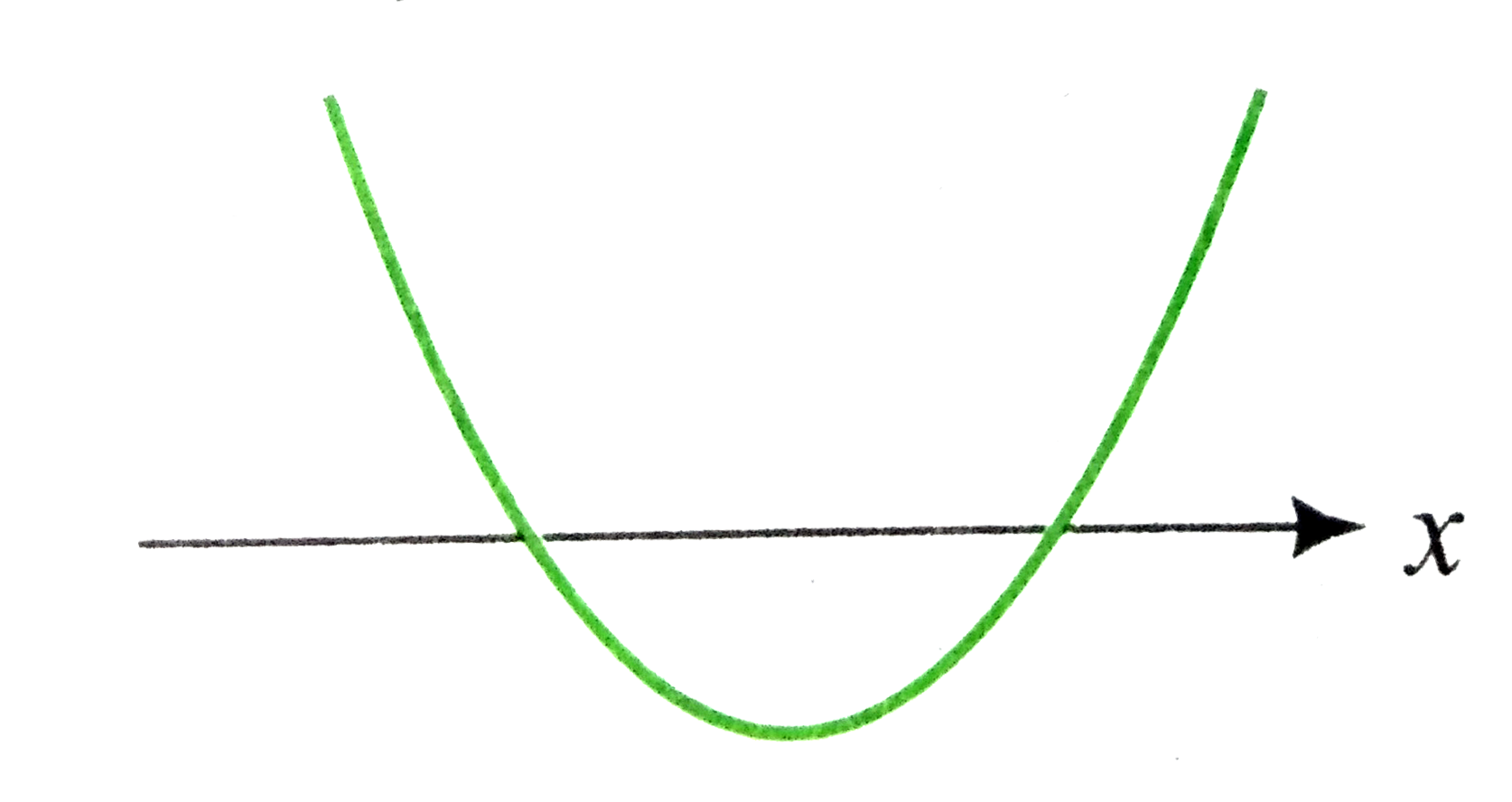 (ii) Both the roots are equal. So `D= 0` `rArrm = 9 or m = 1` 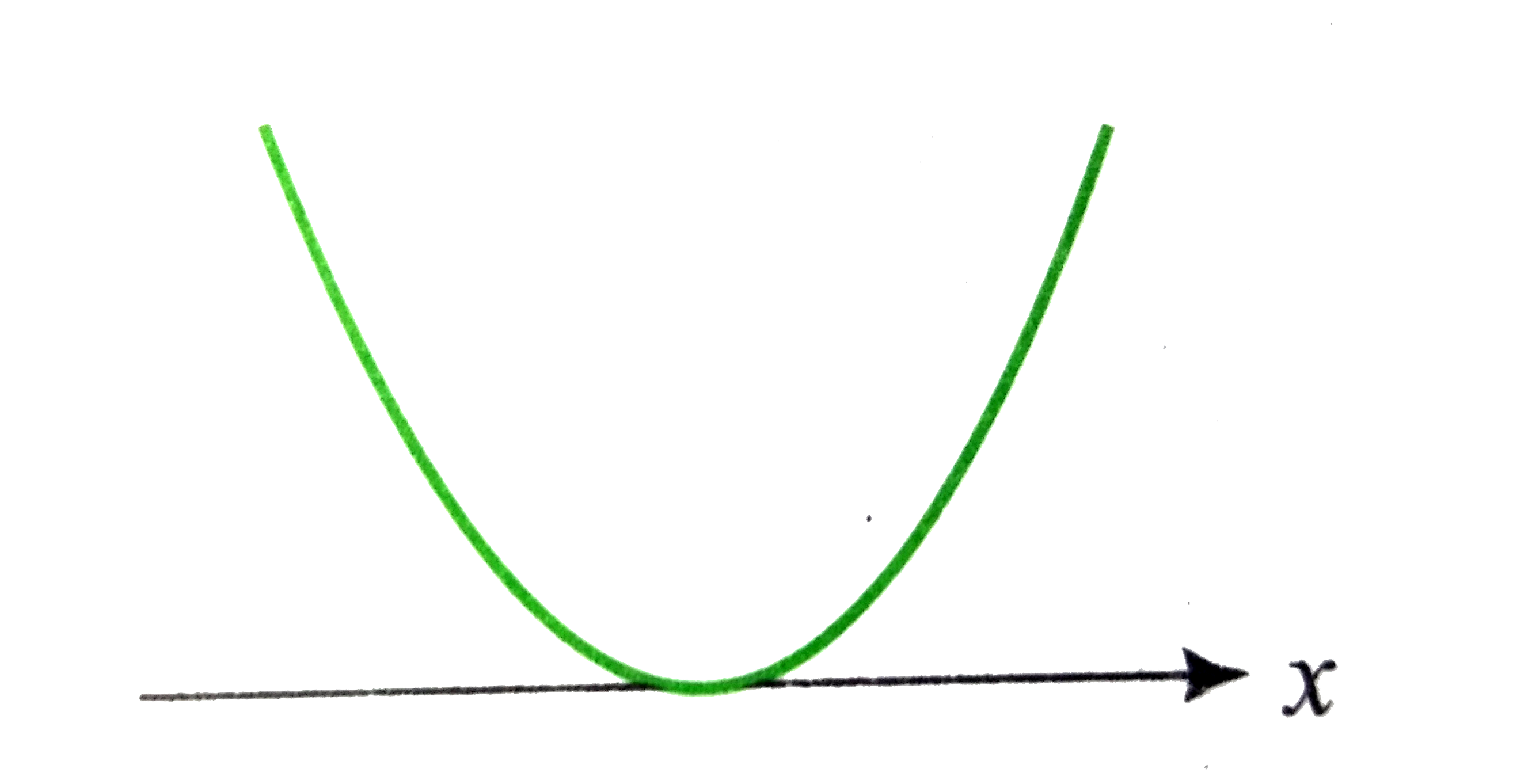 (iii) Both the roots are imaginary. So, `D lt`0 `rArr( m - 1)(m - 9) lt` 0 `rArrm in` ( 1, 9)  (iv) The roots are oppsite in sing . Hence, the product of root is negative. So, `m lt rArrm in (-infty, 0)` 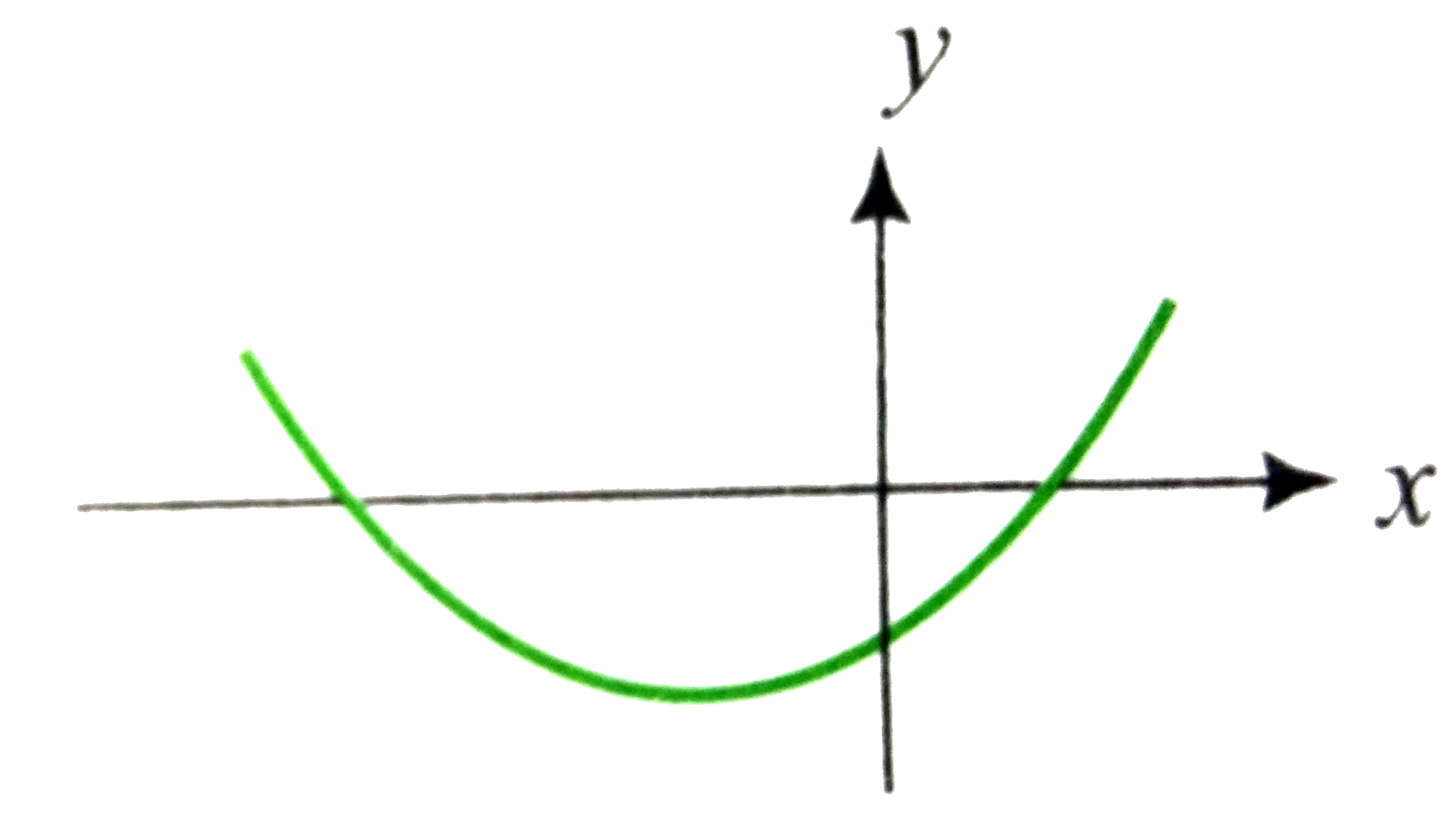 (v)Roots are equal in magnitude but opposite in sign . Hence, SUM of roots is zero as well asD`ge 0. ` So, m `in (-infty,1) cup (9, infty)` and`m - 3 = 0, i.e., m = 3` Hence, so such m exists. 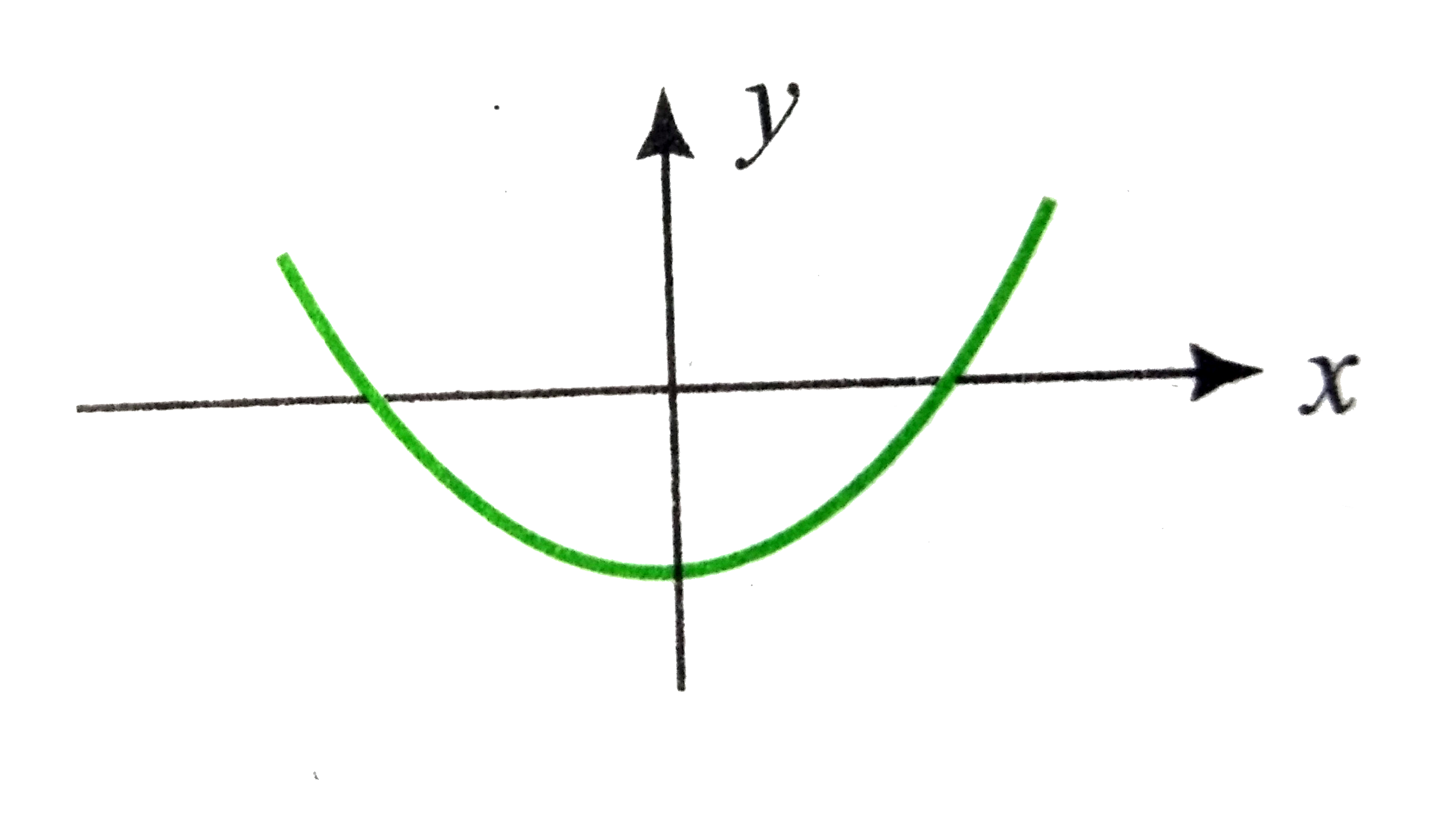 (vi) 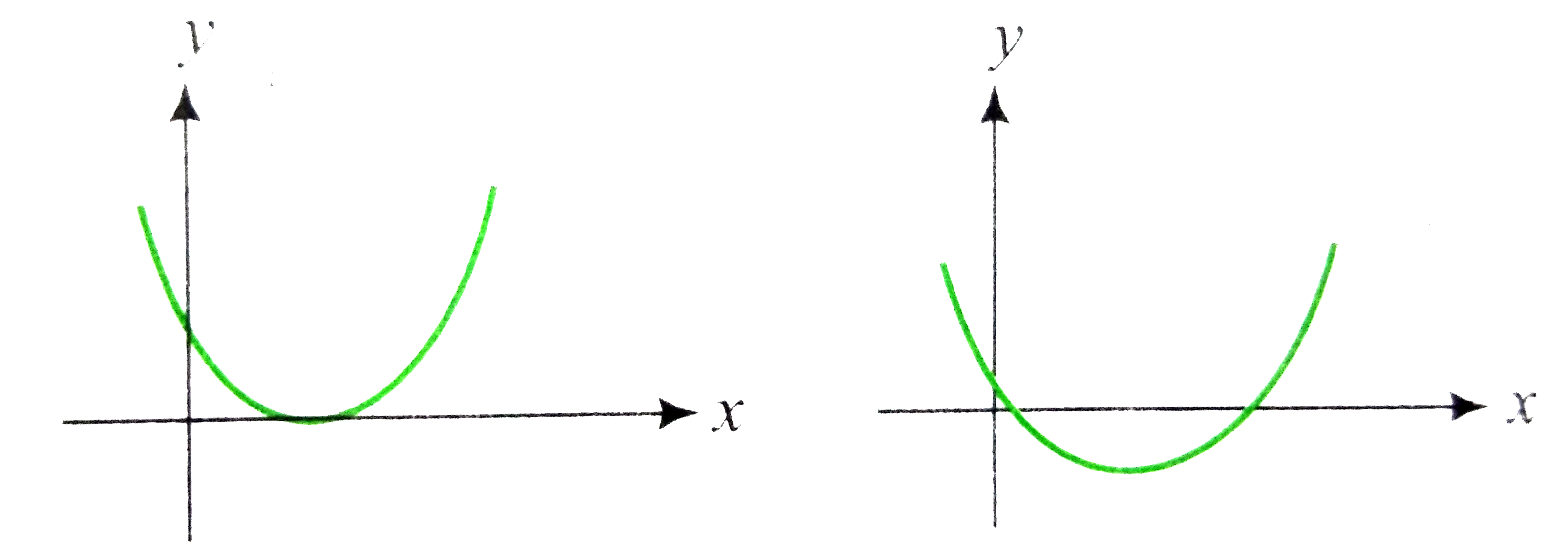 Both the roots are positive. Hence, `D lt ` 0, and both the sum and the product of roots are positive. So, m - 3`gt 0, m gt` 0and m `(-infty, 1] cup [9, infty)` m `in [ 9, infty)` (vii)  `<br> Both the roots are negative . Hence, D `ge` 0, and the sum is negative but the product is positive . So, <br> `m - 3 lt 0, m gt 0, m in (-infty, 1] cup [9, infty)`<br> `rArrm in` (0, 1] <br> (viii)<img src=) At least one root is positive . Hence, either one rootis positive or both roots are positive . So, m`in (-infty, 0) cup [9, infty)` (ix) 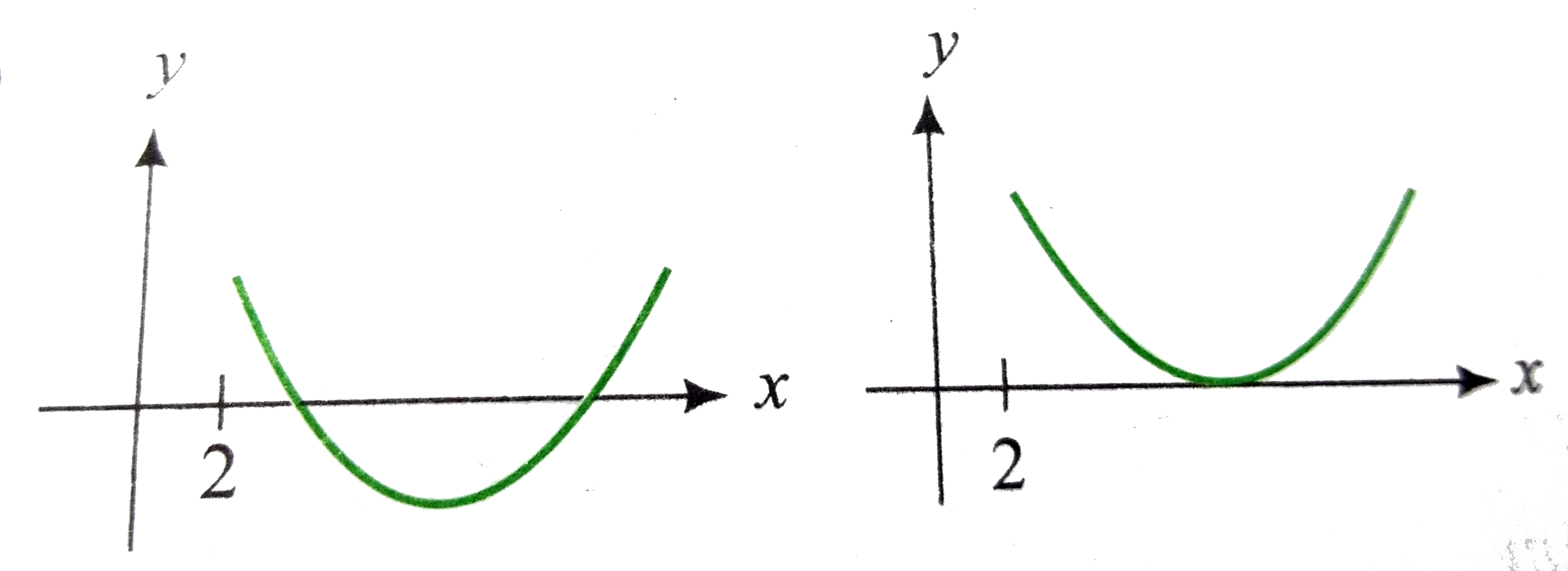 One root is smaller then 2 and the other root is greater than 2, i.e., 2 lies between the roots. So, `f(2) lt` 0 `rArr4 -2 (m - 3) + m lt` 0 `rArrm gt ` 10 (x)  Both the roots are greater then 2. So, `f(2) gt 0, D ge 0, - (b)/(2A) gt` 2 `rArrm lt` 10 and m `in ( - infty, 1] cup [9, infty)` and m - 3 `gt`4 `rArrm in` [ 9, 10) (xi)  Both the roots are smaller then 2. So, `f(2) gt 0, ge 0, - (b)/(2a) lt` 2 `rArrm in (-infty, 1]` Exactly one root lies in (1, 2) . So, `f(1) f(2) lt` 0 `rArr4(10 - m ) lt` 0 `rArrm in (10, infty)` (xiii) Both the roots lie in the interval (1, 2) . Then, D `ge 0 rArr(m - 1) (m - 9) ge` 0 `rArrm LE 1 or ge `9(1) Also `f(1) gt `0 and `f(2) gt 0 rArr10 lt ` m(2) and`1lt-(b)/(2a) lt 2 rArr 5 lt m lt 7`(3) Thus, no such m exists. (xvi)Cace I : Exactly one root lies in (1, 2 ). So, `f(1)f(2) lt 0 rArrm gt `10 Case II: Both the roots lie in (1, 2). S0, from (xiii), m `in phi`. Hence, m `in (10, infty`). For one root greater than 2 and the other root smaller than 1, `f(1)lt` 0 and `f(2) lt` 0 But `f(1) = 4. Thus, no such m exists. |
|
| 10987. |
lim_(n to oo)(1)/(n)[tan.(pi)/(4n)+tan.(2pi)/(4n)+…..+tan.(n pi)/(4n)] |
|
Answer» log 2 |
|
| 10988. |
Two tangents to the hyperbola (x^(2))/(25) -(y^(2))/(9) =1, having slopes 2 and m where (m ne 2) cuts the axes at four concyclic points then the slope m is/are |
|
Answer» `-(1)/(2)` It meets the axis at `A -= (+-(sqrt(91))/(2),0),B (0,+-sqrt(91))` Tangents having slope `'m', y = MX+- sqrt(25 m^(2)-9)` It meets the axis at `D(+-(sqrt(25m^(2)-9))/(m),0), C -= (0,+-sqrt(25m^(2)-9))` ABCD is cyclic quadrilateral `rArr OA XX OD xx OB xx OC` `rArr (sqrt(91)(sqrt(25m^(2)-9)))/(2m) =sqrt(91) (sqrt(25m^(2)-9))` `rArr 2m = 1 rArr m= (1)/(2)` |
|
| 10989. |
For some constant a and b, find the derivative of i. (x-a)(x- b)ii. (ax^(2)+b)^(2) iii. (x-a)/(x-b) |
|
Answer» |
|
| 10991. |
If C is the mid-point of AB and P is any point outside AB, then |
|
Answer» PA + PB = PC PA + PB = 2 PC |
|
| 10992. |
Let y=x^(3)-8x+7 and x=f(t) given t=0, x=3 Find the value of (dx)/(dt) |
|
Answer» `(2)/(19)` |
|
| 10993. |
Find the derivative of f given by f(x)= tan^(-1)x assuming it exists |
|
Answer» |
|
| 10994. |
Standard deviation of first 'n' natural numbers is |
| Answer» Answer :C | |
| 10995. |
If A=[{:(cosalpha,sinalpha),(-sinalpha,cosalpha):}],andA^(-1)=A', find value of alpha. |
|
Answer» |
|
| 10996. |
Fundamental theorem of definite integral : If int_(sinx)^(1)t^(2)f(t)dt=(1-sinx) then f((1)/(sqrt3))=........ |
|
Answer» `(1)/(3)` |
|
| 10997. |
If [[3y-x,-2x],[3,7]] = [[5,-2],[3,7]],then find x and y |
|
Answer» `2,1` |
|
| 10998. |
If lt 1then (1-2x)/(1 - x x ^(2)) + ( 2x - 4x ^(3))/(1 - x ^(2) + x ^(4)) + (4x^(3) - 8x ^(7))/(10 x ^(4) + x ^(8)) + …oo= |
|
Answer» `(1+ 2X)/(1 + 1+ x ^(2))` |
|
| 10999. |
If x is real, the minimum value of x^(2)-8x+17 is …………. (Where x in R) |
|
Answer» `-1` |
|
| 11000. |
If ax + by + c = 0 is the polar of (1,1) with respect to the circle x^(2) + y^(2) - 2x + 2y + 1 = 0 and H. C. F. of a, b, c is equal to one then find a^(2) + b^(2) + c^(2) . |
|
Answer» |
|